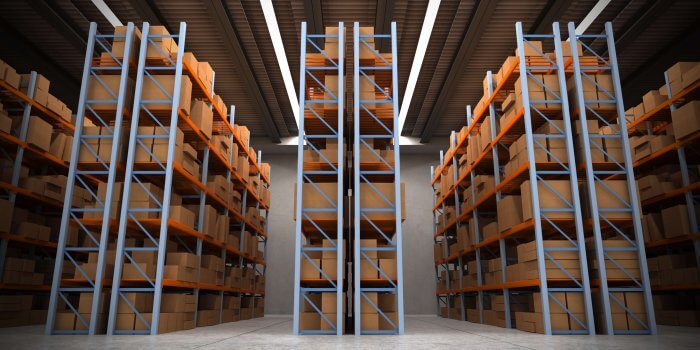
How to avoid declining sales?
How to avoid declining sales
In early November I attended the ICT & Logistics exhibition in Utrecht. The fair coincided with the Logistica. If you love logistics, like me, that’s a nice convention. The Logistica is all about movement, massive forklift trucks on one hand, to completely automated luggage handling systems. How beautiful! Unfortunately, my own business of ICT and Logistics is the less spectacular one of the two. No beautiful machines to show, what are those IT companies actually trying to sell?
In parallel sessions that were organized alongside the exhibition several speakers did their effort and gave their views on Supply Chain Management. I wandered about the presentations, picked some cherries and baked my own cake of it:
Customers must make clear choices!
Customer Intimacy, Product Leadership or Operational Excellence. And selecting the right system with it, because putting everything in one system is impossible.
Clear and informative and a great way to steer an organization in the right direction with the right focus, but I missed the translation to the logistical consequences. What is the impact on the stock management?
I think all three strategies share one common denominator. Revenue maximization.
How comes that there is one aspect that is rarely talked about. Item availability. In my experience item availability plays a subordinate role at all the solutions I’ve seen . There is often a lot of emphasis on efficiency and automation of repetitive movements, preventing mistakes and even the “optimization” of stock. Important given the costs involved, but in my opinion suboptimal. Lot of energy is focused on cost reduction – only realized after a usually not-that-small investment
What if we consider the following question the most important for Revenue maximization?
How can I be as successful as possible selling my product to my (potential) customers?
I’m convinced that the biggest gain is tucked away in the prevention of declining sales!
A common argument is that it is impossible to guarantee 100% availability for all products. Because infinite stock would be needed! But is that so?
There is evidence enough that it can be achieved without the stock going “through the roof”. One of the largest sporting goods manufacturers [Nike] in the world has already proven several years back that it is possible to eliminate declining sales without increasing inventory levels to unacceptable heights. On the contrary. The average inventory level even declined. And major retailers [eg. Wallmart] in the United States achieved similar results. How did they do it and can we do that as well?
Be convinced that change is necessary & possible
To start with the last question, yes you can. How? Initially by starting to think that it really is possible and be convinced. One of the biggest obstacles is in fact convincing people. Not the technique and not the resources, but the organization and manner in which the processes and systems are designed are the problem. We are holding ourselves back. And that starts with the need to address it differently. We often don’t see that we need to. Because it’s still good if we do not do bad right now, or why should it be much better? Roughly speaking, we do not have too many problems with dysfunction, because it does not hurt enough. But the solution begins with the process and accept the fact that the change is necessary. If that belief is there, it naturally leads to intrinsic motivation. The will to change.
Once we are open to change, we can see that it is smarter.
Align supply chain with Point of Sale needs
But what goes wrong?
The focus is not on the most vulnerable link. Availability – at any time – of stock at the place where the sale is made. Everything, all processes, all activities, all attention should go there. And all the activities we do in addition, would depend on, or rather, should be in service of it.
How do we ensure that the right amount of inventory is available in the right place? And right place can be warehouse for online purchases, shops. Different supply chains in one company. Even more important to optimize the stock – in order to avoid selling NO.
Push vs Pull
The difference in approach appears strongest in two words: Push and Pull. If you’re “pushing” you start at the beginning of the chain, the supply side, and try to pursue the highest possible efficiency. Among others by working with optimal order quantities and by trying to achieve economies of scale in virtually every link of the distribution network. In production, in transportation, in storage. Availability is as it were pressed into the chain, in numbers that are higher than necessary, and the result is high inventories. But another, complementary, effect of a push strategy is that we “save” orders, meaning that there is only ordered when a certain minimal amount is reached. The result is – paradoxically – deficits. See here the two main disadvantages of Push strategy.
A pull strategy starts from the other side, with the customer. Once the customers orders something, the question trickled down to the previous link, where demand comes together from different outlets and where aggregate demand is again put through to yet another link. Which is repeated until the first step in the chain. The idea behind a pull strategy is to minimize the creation of the “amplification effect”, for example minimum order quantities to handle or to wait long to order. A clear view of the actual demand is precisely the aim, so that we can effectively respond to changes, both positive and negative.
No more declines but selling YES instead
A pull strategy has many advantages over a push strategy, including a much lower risk of declining sales. The average stock in the chain is many times lower. The advantages are obvious, so why not focus on ICT systems to achieve precisely that? There are systems that can. For example Soft4Inventory of Softera. Worth a look. Might just be the start of a sustainable way of working. More revenue, higher service level, lower stock costs.
Eric Slond is Functional consultant and co-founder of Faect BV. Our toolbox for Supply Chain challenges is the latest addition to the Faect Portfolio : Soft4Inventory



